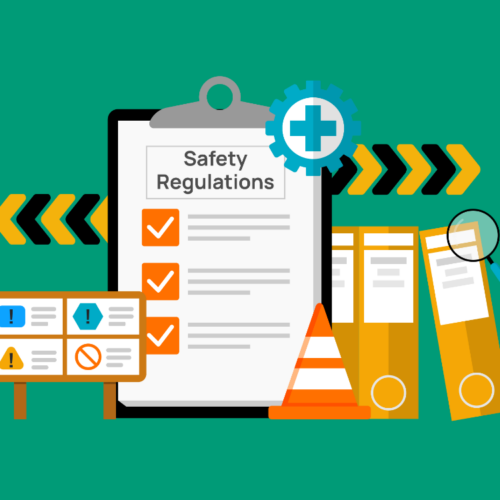
You know the importance of safety, but how can you motivate your employees to get on board?
You’ve dedicated numerous resources towards building comprehensive safety programs, used best practices to train supervisors and recruited candidates you felt would make safety a priority.
After all of this preparation, are you still seeing a disconnect between the goals of your safety program and the attitudes and behaviors of your employees? If so, you may need to reevaluate how you’re motivating employees to be committed to safety in the workplace. Take a look at the five best practices below to learn more.
1. Make safety an important part of your organization’s culture
From the minute candidates walk through your doors for their interview they should know that safety is one of your organization’s central values. This can be done by including safety reminders and training in all steps of the hiring and onboarding processes as well as following through with them during every workday.
To demonstrate a commitment to safety, Staff Management | SMX presents our employees with a daily safety topic and guided stretching exercise at the start of each shift.
2. Leadership teams should be champions of safety
Successful employee engagement in safety programs (and all programs, really) depends largely on the motivation and support of leadership teams. All members of the leadership team should strive to set positive examples and abide by the same safety policies expected of their employees.
Along with this, leadership should provide consistent feedback in what is commonly referred to as behavior-based safety. As highlighted in our safety guide, behavior-based safety can include leadership taking the time to observe employees and provide feedback, encouraging employees to stay safe and ensuring they are informed about all required safety procedures.
3. Use positive reinforcement
Positive reinforcement is largely defined by behavioral scientists as “any consequence that causes a behavior to repeat or increase in frequency.” Positive reinforcement and safety programs should go hand in hand. Employee satisfaction research has shown this can be done by reminding your employees that they are truly making a difference and thanking them often.
That being said, leaders should not ignore safety mishaps, no matter how minor they may be. A study on safety science showed that when safety monitoring is combined with a learning-supportive environment, employee participation in safety procedures will increase. In other words, leaders should be diligent when addressing safety concerns, but to do that effectively, they should approach initial concerns as learning lessons and not be overly accusatory.
4. Your employees should feel ownership in the safety process
Employees will be more committed and motivated if they play an active role in safety programs. As mentioned earlier, this can be done by reminding employees that their diligence towards safety has a direct impact on their workplace, their safety and the safety of their co-workers. Additionally, employees should have multiple outlets available to provide feedback on their organization’s safety program.
5. Utilize employee feedback to reassess your safety program
Any time your organization encourages employee feedback, you should be committed to using that feedback to make reasonable and necessary changes. When a good idea or observation is submitted, take action in a timely fashion and make it known that you appreciate the participation with positive reinforcement.
Additionally, if the majority of your employees are upset with a specific aspect of your safety program, leadership teams should discuss how it can be altered and improved. When your employees believe that your organization genuinely listens to their concerns, they will be more motivated and less resistant to complying with your safety program.
The bottom line
In order for your safety program to work, your employees need to be motivated and committed. By making safety a priority from the beginning of the hiring process, using positive reinforcement to thank and educate, and by listening to and taking action with employee feedback, you will be on track towards a safer and more compliant workforce.
Want to learn about a comprehensive safety program? Download our full safety guide here.



